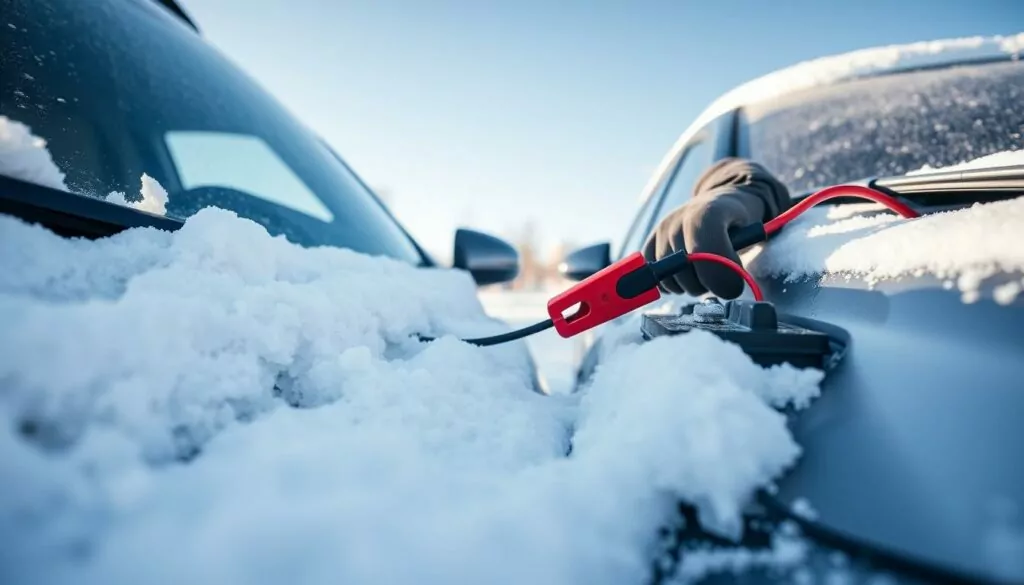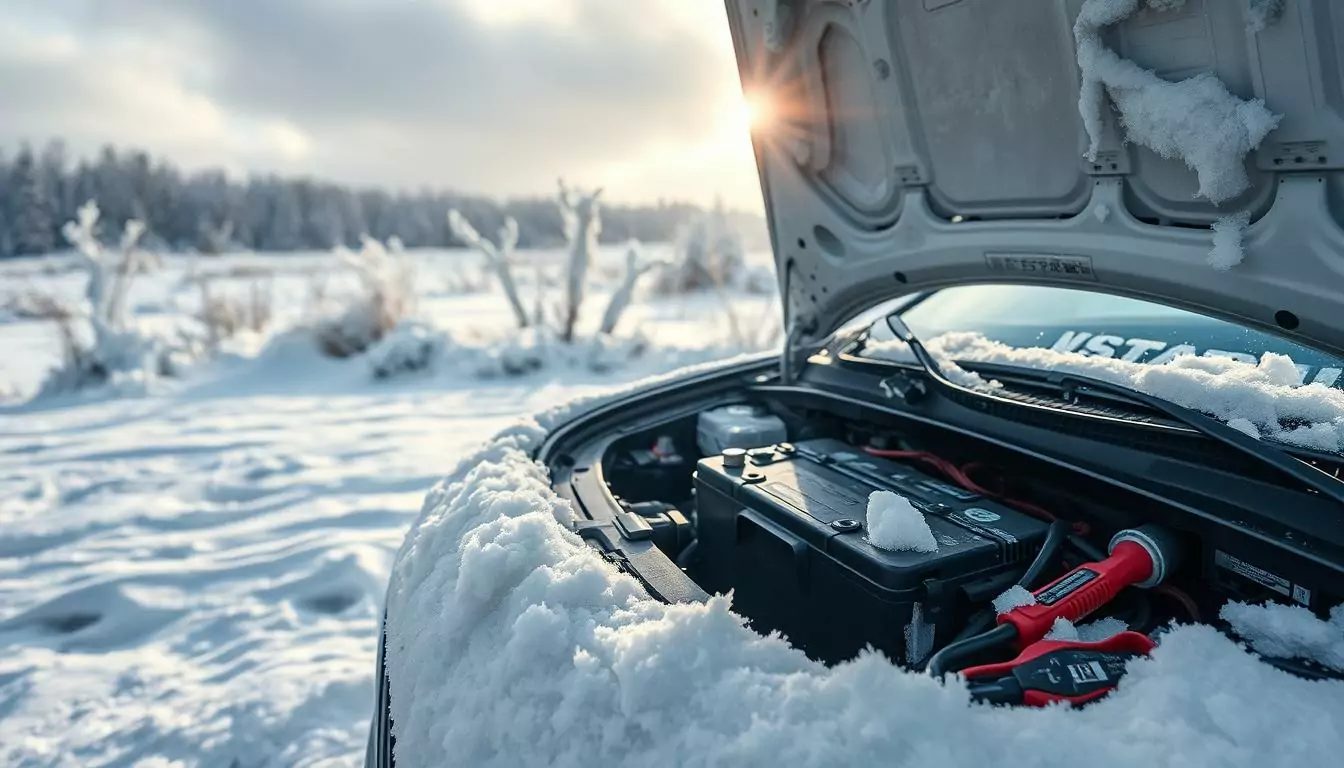Winter’s no picnic for your car battery—I’ve learned that the hard way. Cold temps can zap its power faster than you can say “frozen windshield,” leaving you stranded in a frosty parking lot. So, how do you keep your ride purring through the chill? Let’s dive into some practical winter car battery care tips that’ll save you headaches (and maybe a tow bill) this season.
With the right know-how, you can tackle slow starts, avoid breakdowns, and keep your battery humming. Whether you’re a DIY newbie or a seasoned gearhead, I’ve got you covered with advice that’s worked for me—and it’ll work for you too.
Why Winter Wreaks Havoc on Your Car Battery
Ever wonder why your car groans more in January than July? Cold weather slows down the chemical reactions inside your battery, cutting its efficiency by up to 30%, according to automotive experts. It’s like trying to run a marathon in flip-flops—possible, but not pretty. Add in shorter days and extra electrical demands (hello, heated seats!), and your battery’s working overtime.
Most batteries last 3-5 years, but harsh winters can shave months off that lifespan. I once ignored a sluggish start—big mistake. A little prep goes a long way, trust me.

Key Takeaways for Cold Weather Battery Care
- Low temps sap battery power—think of it as a winter energy slump.
- Replace your battery after 4 years if starts get sluggish.
- Drive regularly to keep the charge alive.
- Stash jumper cables or a portable jump starter in your trunk.
- Check for corrosion—clean terminals keep things flowing.
Spotting Battery Trouble Before It Strands You
A failing battery doesn’t always wave a red flag—it’s sneaky like that. Last winter, my headlights dimmed, and I shrugged it off. Next thing I knew, I was stuck at the grocery store with a dead engine. Don’t be me—watch for these warning signs.
Red Flags to Watch For
- Slow crank or a weak “click” when you turn the key.
- Dim headlights that flicker at idle.
- Weird electrical glitches—think radio static or lazy power windows.
- A swollen battery case or a whiff of rotten eggs.
If you spot these, get your battery tested pronto. Many auto shops—like Pep Boys or AutoZone—do it for free. Better safe than sorry, right?

Pre-Winter Battery Prep Made Simple
Getting your battery winter-ready doesn’t take a rocket scientist—or a fat wallet. A few easy steps can mean the difference between a smooth start and a frosty SOS call. Here’s what I do every November, and it’s never let me down.
Clean Those Terminals
Corrosion’s a silent killer for battery health. Mix some baking soda and water, grab an old toothbrush, and scrub those terminals clean. Rinse, dry, and you’re golden—it’s oddly satisfying too.
Check the Voltage
A healthy battery reads about 12.6 volts when fully charged. Mine dipped to 12.3 last year, and I knew it was time for a recharge. Grab a multimeter or swing by a shop—keeps you ahead of the game.
| Task | Frequency | Why It Matters |
|---|---|---|
| Clean Terminals | Monthly | Boosts connection quality |
| Test Voltage | Quarterly | Spots issues early |
Picking a Battery That Laughs at Winter
Not all batteries are created equal—especially when Jack Frost’s in town. I switched to an AGM battery two years ago, and it’s been a game-changer. Here’s the scoop on choosing the right one.
Best Types for Cold Weather
Absorbed Glass Mat (AGM) batteries shine in freezing temps—they’re tough, reliable, and handle high electrical loads like champs. Standard lead-acid works fine too, but AGM’s my go-to for brutal winters.
Decoding Battery Ratings
- Cold Cranking Amps (CCA): Higher numbers mean better starts in the cold. Aim for 600+ if you’re in a deep-freeze zone.
- Reserve Capacity (RC): How long it’ll run solo—great for accessory-heavy cars.
Check your owner’s manual for specs, and don’t skimp—spending a bit more now beats a dead battery later.
Jump Starting Like a Pro
Dead battery? Been there—nothing kills your vibe like a car that won’t budge. Here’s how I’ve jumped mine safely (and without sparking a disaster).
Quick Steps to Revive Your Ride
- Park the cars close but not touching—safety first.
- Shut ‘em both off.
- Hook up red cables to the positive terminals.
- Clip the black cable to the good battery’s negative, then to a metal spot on the dead car’s engine.
- Fire up the working car, then try the dead one.

Winter Driving Habits to Save Your Battery
Your driving style matters more than you’d think. Short trips in the cold? They’re a battery’s worst nightmare—mine barely recovered from a week of quick errands. Here’s how to ease the strain.
Bundle your trips into longer drives to let the battery recharge fully. And turn off extras like the radio before starting—it’s a small tweak that pays off big.
FAQs About Winter Car Battery Care
How Often Should I Test My Battery?
Check it every few months, especially before winter hits. If it’s over 3 years old, twice a year’s a good rule. Keeps you from getting caught off guard.
What’s the Best Way to Store a Battery?
Charge it full, disconnect the negative terminal, and stash it somewhere cool and dry. A battery maintainer’s your friend for long-term storage—keeps it fresh.
When Should I Call a Pro?
If your battery’s leaking, swelling, or just won’t hold a charge, don’t mess around—get a mechanic. Better than frying your car’s electronics, ya know?
